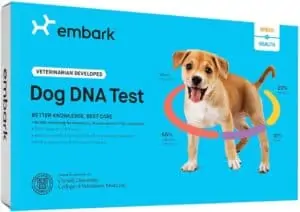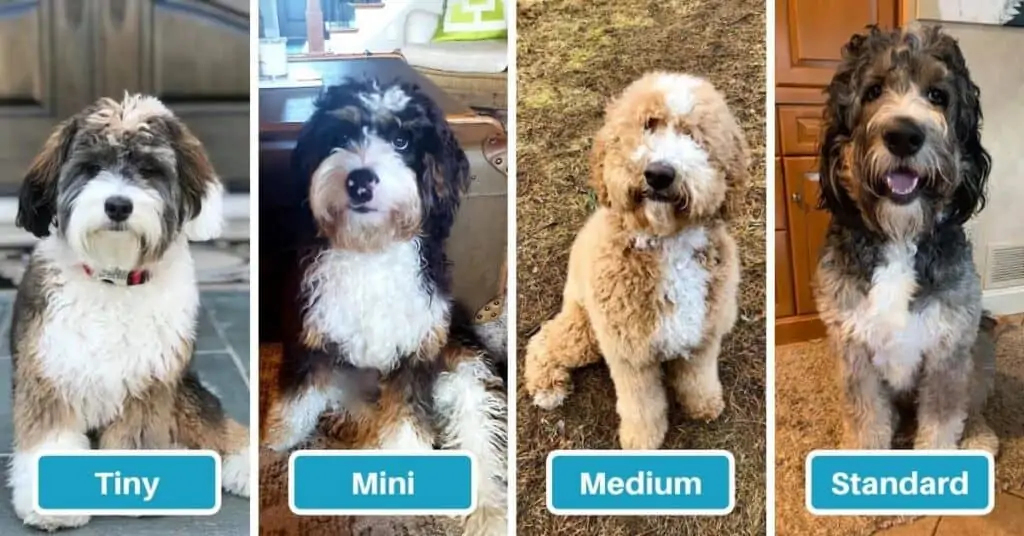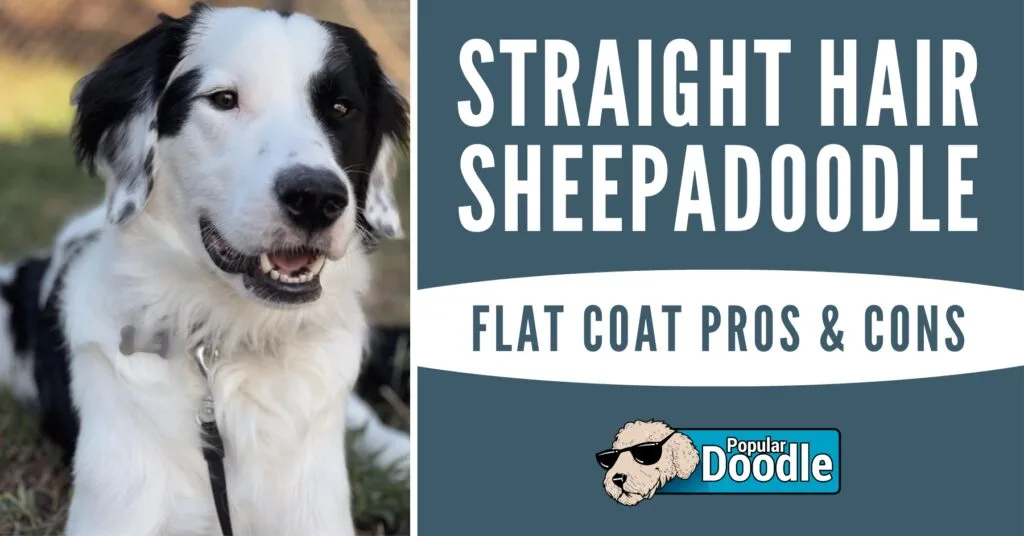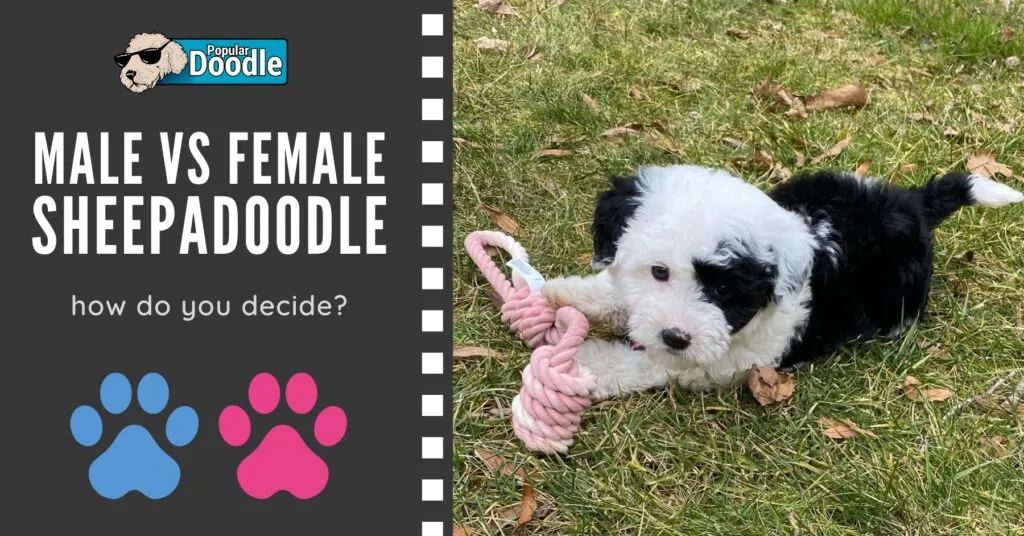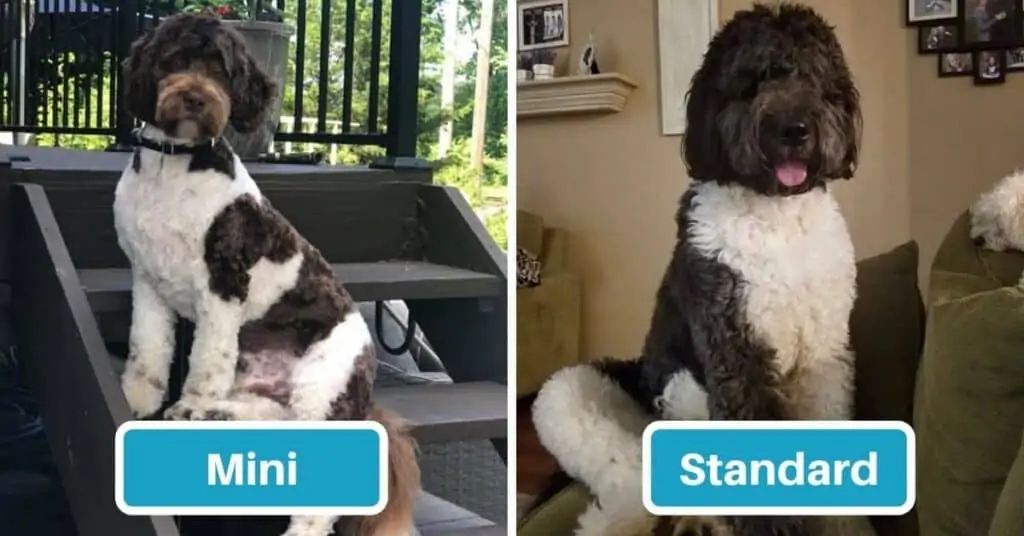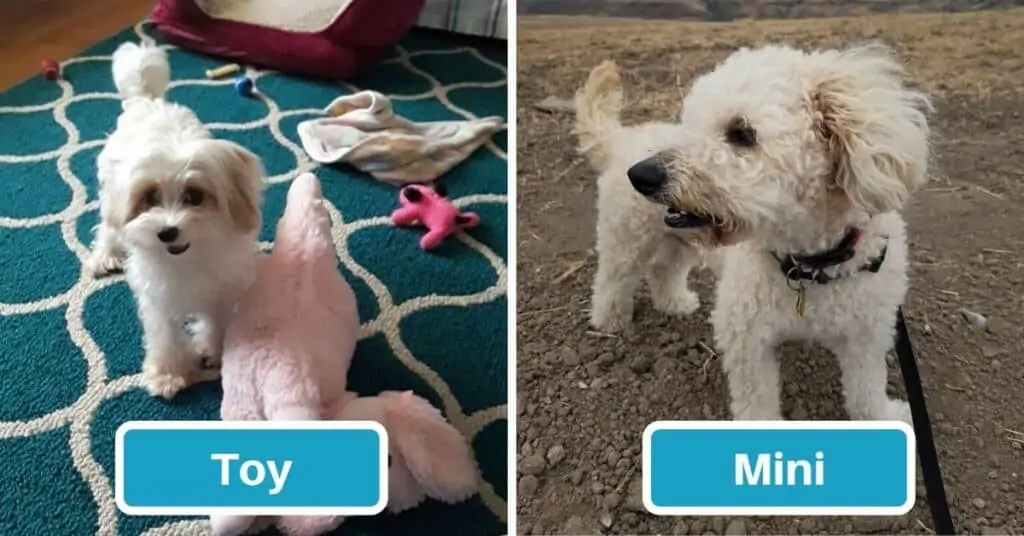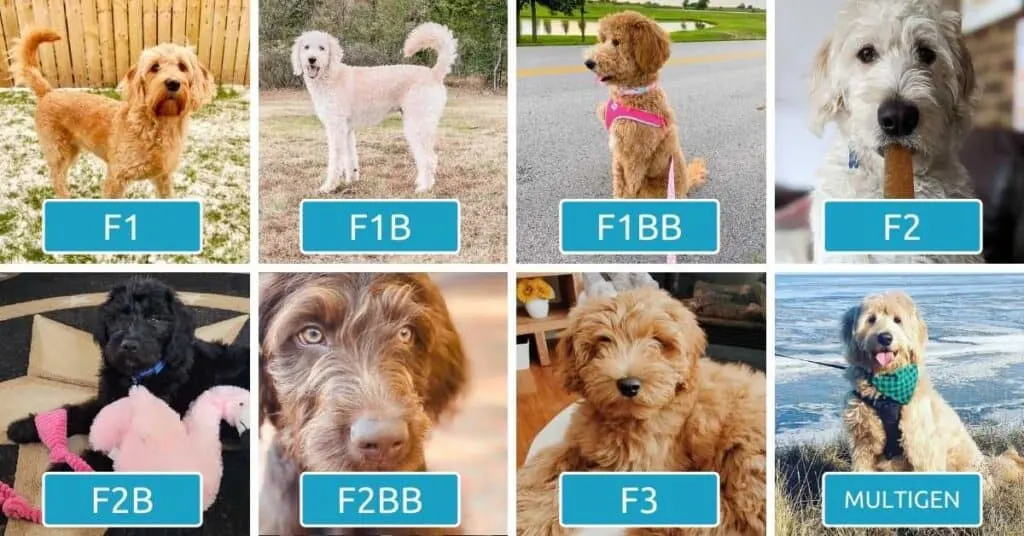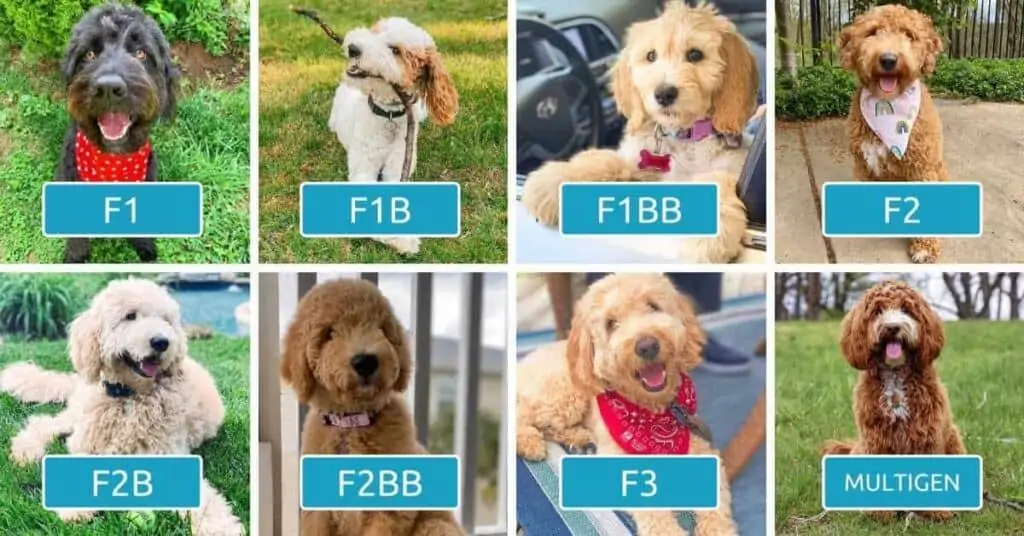
Confused about Goldendoodle generations? You’re not alone! Getting a new puppy can be a confusing process. There are lots of questions you need to consider before getting to the the fun part of selecting your new family member.
What size should you get? What breed is right for you? Should you get a male or a female? The list goes on…it can definitely feel a bit overwhelming!
One of the most common questions we get is about Goldendoodle generations. What is all this talk about F1, F2B, Multigen, etc.?
It’s extremely important to understand Goldendoodle generations before selecting a puppy, as it could have a big impact on whether a potential puppy is a good match for your family.
Don’t worry if you feel lost. Even experienced doodle owners find it challenging to explain this concept. This article will break down what these generations mean and how they can impact your puppy selection!
Keep in mind, while this article is about Goldendoodle generations, this same concept can be applied to any of the numerous doodle breeds.
Why Do Goldendoodle Generations Matter?
Your Goldendoodle’s ancestry, and therefore their generation, can influence their physical characteristics, personality, and the potential health issues they may be at risk for.
While responsible breeding practices can help lower the risk of some potential health issues, I urge all dog owners to consider investing in pet insurance to protect themselves from expensive, unexpected veterinary care.
I personally have a policy with Healthy Paws Pet Insurance to protect my Goldendoodle, as they’re one of the most affordable, yet comprehensive options.
Labeling Goldendoodle Generations
In order to understand doodle generations, it’s important to grasp the terminology used to label them. While it seems confusing, it’s really not that hard once you know what it means.
What does the “F” mean?
Every doodle generation begins with the letter F. This F stands for “Filial Hybrid.” All this means is that it is a hybrid dog that came from from two purebred dogs.
What does the number mean?
The number is the generation of the dog. 1 means first generation, 2 means second generation, 3 means third generation, etc. You’ll learn more about this later in the article.
What does the “B” mean?
Some doodle generations have a “B” at the end of them which indicates that it is a backcross. A backcross is a fancy term for breeding the current Goldendoodle generation back to a purebred Poodle.
While it can indicate breeding back to a purebred Golden Retriever instead, this is extremely uncommon and, for the purposes of this article, we will only refer to it as breeding back to the Poodle.
If there are two B’s in the generation name, it means that generation of Goldendoodle was backcrossed twice with a Poodle.
Goldendoodle Generations Chart
Use this table as a reference as you read through this article. It’s helpful in visualizing the generations and how they are produced. Keep in mind that DNA percentages are simply theoretical estimates. You never know for sure how much of each parent’s DNA an individual puppy will inherit.
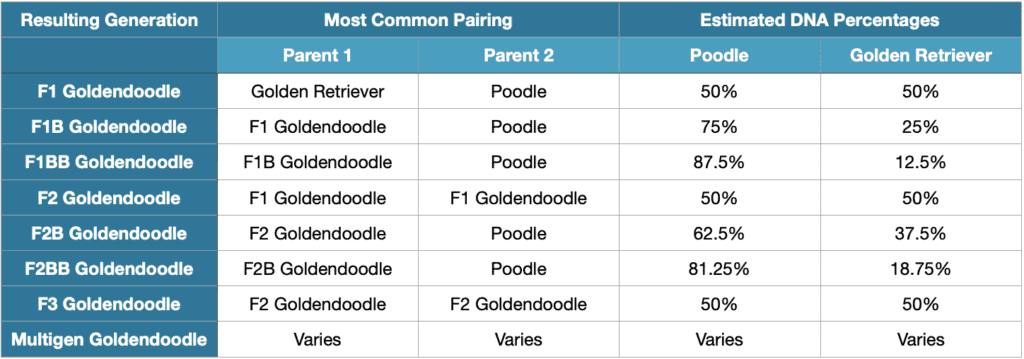
What is an F1 Goldendoodle?
An F1 Goldendoodle is the most basic cross between a purebred Golden Retriever and a purebred Poodle. This first generation Goldendoodle is what most people think of as a “classic” Goldendoodle, with the DNA split roughly 50/50 between the two breeds.
Due to the large amount of genetic diversity, a first generation Goldendoodle’s appearance can vary widely. The coat could be straight like the Golden Retriever, curly like the Poodle, or somewhere in between.
F1 Goldendoodles will likely be lower shedding than a Golden Retriever, but they will still probably have moderate shedding and trigger allergies. For this reason, if you suffer from allergies, you likely want to pass on a F1 Goldendoodle puppy.
The positive that comes from so much genetic diversity is lower odds of your dog having inherited genetic issues that plague purebred breeds. While mixed breeds in general are at lower risk than purebred dogs, the F1 generation of Goldendoodle is the safest bet for avoiding these genetic issues.
F1 Goldendoodle Price
First generation Goldendoodles tend to be the least expensive. However, prices vary widely and are far more dependent on other factors including location, breeder reputation, size, and color. In general, Goldendoodles can range from $1,000 up to $5,000.
One advantage to F1s is that they’re the most common generation. This means that you may find them at rescues or shelters where adoption fees are much more reasonable than breeder prices!
Read More: How Much Does a Goldendoodle Cost? We Surveyed 300+ Owners to Find Out!
F1 Goldendoodle Pictures

Photo courtesy of @duke__the__dood on Instagram. 
Photo courtesy of @stellasdoodleworld on Instagram.

Photo courtesy of @mio_the_goldendoodle on Instagram. 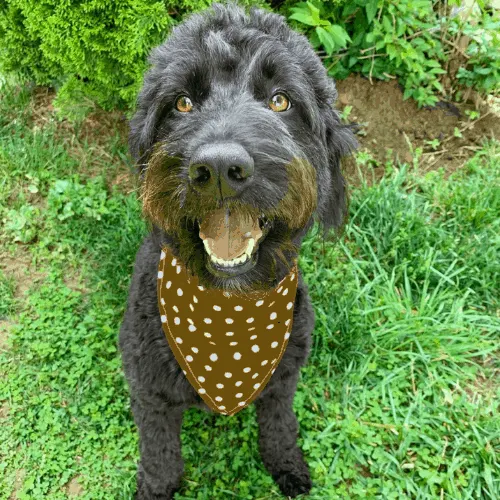
Photo courtesy of @thenashdoodle on Instagram.
What is an F1B Goldendoodle?
A first generation backcross Goldendoodle is the result of breeding an F1 Goldendoodle with a Poodle.
As mentioned earlier, it could also mean breeding an F1 with a Golden Retriever. However, this is a rare occurrence and it’s safe to assume that an F1B Goldendoodle means that it’s backcrossed to the Poodle unless stated otherwise.
While you lose a bit of the genetic diversity by crossing back to the Poodle, the main advantage is you get a more predictable coat which is usually lower-shedding and more hypoallergenic than an F1. This generation is usually a safe bet for mild allergy sufferers.
F1B Goldendoodle Price
Prices for F1B Goldendoodles tend to be a bit higher than if you were purchasing an F1. However, prices vary widely and are far more dependent on other factors including location, breeder reputation, size, and color. In general, Goldendoodles can range from $1,000 up to $5,000.
F1B Goldendoodle Pictures
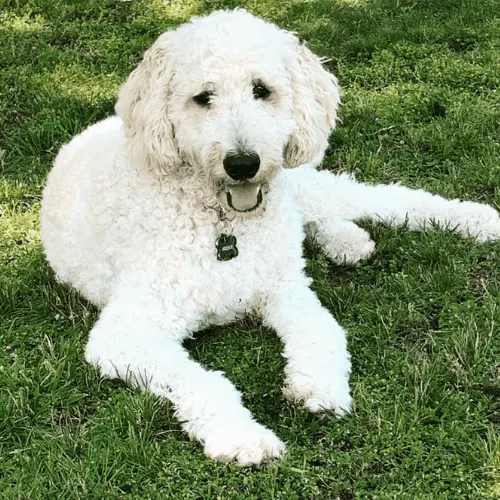
Photo courtesy of @archieforpres on Instagram. 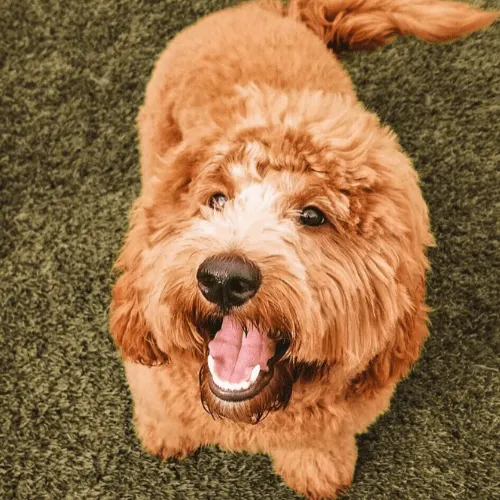
Photo courtesy of @dood_itswrigley on Instagram.
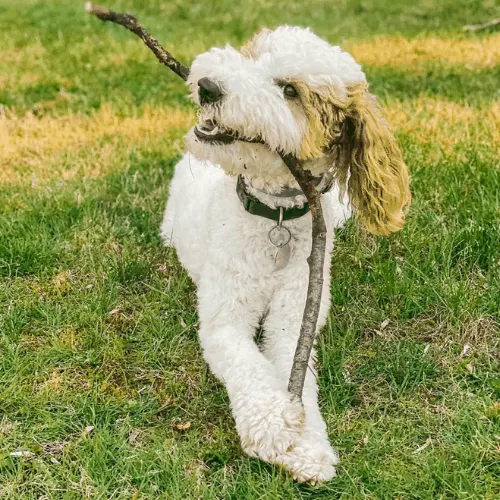
Photo courtesy of @discodoodledog on Instagram. 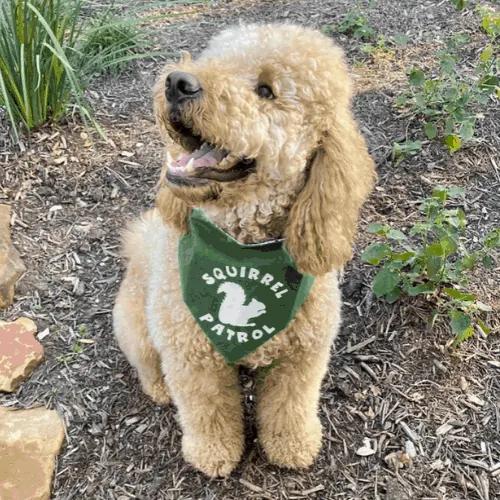
Photo courtesy of @dude.the.dood on Instagram.
What is an F1BB Goldendoodle?
As the generation typically closest to a Poodle in DNA, the F1BB Goldendoodle is backcrossed twice with a Poodle. This means they have an F1B Goldendoodle parent and a Poodle parent.
This generation of Goldendoodle is designed with allergy sufferers in mind. While it’s still not guaranteed to be hypoallergenic or non-shedding, there is a very good chance it will be. If you have bad allergies, an F1BB or an F2BB Goldendoodle are likely the best generations for you.
Keep in mind that this generation of Goldendoodle is very close to a Poodle in DNA. This means you’ll have less genetic diversity and you’ll likely have a lot of traits typical of Poodles in terms of both appearance and personality. While this can mean a hypoallergenic coat, it could also likely mean a very curly coat that is high-maintenance when it comes to brushing.
For all Goldendoodle owners, but especially those with F1BB Goldendoodles, I highly recommend the Chris Christensen Big G Slicker Brush. While it comes at a premium price, this brush is the absolute best option available for preventing the matting and tangles that often come with Goldendoodle coats.
F1BB Goldendoodle Price
As they are again slightly less common than their lower-generation counterparts, F1BB puppies tend to be slightly more expensive. Keep in mind that prices vary widely and depend on a number of factors including location, breeder reputation, size, and color. In general, Goldendoodles can range from $1,000 up to $5,000.
F1BB Goldendoodle Pictures

Photo courtesy of @frankiemydeardoodle on Instagram. 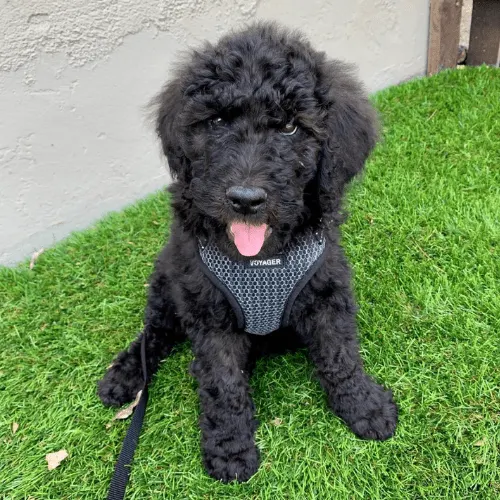
Photo courtesy of @ourdoodlemurphy on Instagram.
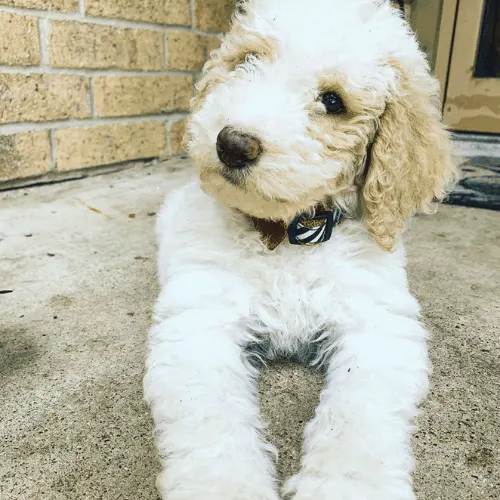
Photo courtesy of @mollie.the.doodle_ on Instagram. 
Photo courtesy of @thatdoodlemillie on Instagram.
What is an F2 Goldendoodle?
There are lots of parent combinations that can result in an F2 Goldendoodle. These second generation Goldendoodles can be bred using an F1 with an F1, an F1 with an F1B, an F1 with an F2, etc. The most common pairing are two first generation Goldendoodles being bred together to produce second generation Goldendoodles.
F2 Goldendoodle puppies are not very common, due to the fact that they are incredibly hard to successfully predict which traits will be produced. Often, this results in Goldendoodle puppies that are closer to the Golden Retriever in temperament and appearance.
If you are not an allergy sufferer and prefer your Goldendoodle to have a significant amount of Retriever traits, an F2 might be right for you.
F2 Goldendoodle Price
F2 Goldendoodles aren’t usually as expensive as backcrosses due to their unpredictability. Keep in mind that prices vary widely and depend on a number of factors including location, breeder reputation, size, and color. In general, Goldendoodles can range from $1,000 up to $5,000.
F2 Goldendoodle Pictures
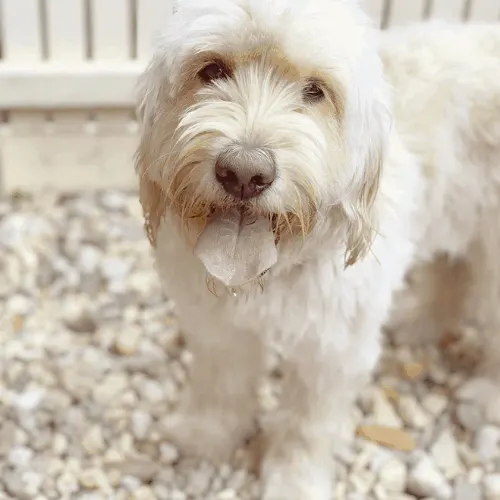
Photo courtesy of @groodlecharli on Instagram. 
Photo courtesy of @louieboo_thegoldendood on Instagram.

Photo courtesy of @ivydoooodle on Instagram. 
Photo courtesy of @minidoodjax on Instagram.
What is an F2B Goldendoodle?
An F2B is a second generation backcross Goldendoodle. This means that an F2 is bred with a Poodle. This takes many of the more random and unpredictable traits of the F2 and adds back in more Poodle characteristics.
This means better odds of being hypoallergenic and non-shedding. It also means that your Goldendoodle will likely be on the curlier side with a high-maintenance coat. Much like the F1B, we’d recommend this generation of Goldendoodle to mild allergy sufferers.
Keep in mind that some breeders may refer to F2B Goldendoodles as Multigen Goldendoodles. This “multigen” label can apply to any generation of Goldendoodle that is beyond an F2.
F2B Goldendoodle Price
Prices for F2B Goldendoodles tend to be a bit higher than if you were purchasing an F2. However, prices vary widely and are far more dependent on other factors including location, breeder reputation, size, and color. In general, Goldendoodles can range from $1,000 up to $5,000.
F2B Goldendoodle Pictures
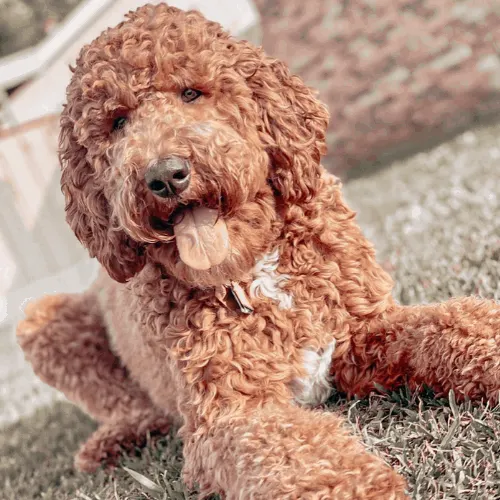
Photo courtesy of @doodwheresmysister on Instagram. 
Photo courtesy of @kobe.theminidoodle on Instagram.

Photo courtesy of @jasperw.doodle on Instagram. 
Photo courtesy of @maindoodmav on Instagram.
What is an F2BB Goldendoodle?
This generation is produced by backcrossing an F2 Goldendoodle generation back to the Poodle twice. It is the result of breeding an F1B and a Poodle. It can also be referred to by many breeders as a Multigen Goldendoodle.
Due to how close in DNA it is to the Poodle, this is a great choice for severe allergy sufferers. While nothing is guaranteed, the F2BB Goldendoodle generation is one of the safest bets for being non-shedding and hypoallergenic.
F2BB Goldendoodle Price
As they are slightly less common than their lower-generation counterparts, F2BB Goldendoodle puppies tend to be slightly more expensive. Keep in mind that prices vary widely and depend on a number of factors including location, breeder reputation, size, and color. In general, Goldendoodles can range from $1,000 up to $5,000.
F2BB Goldendoodle Pictures

Photo courtesy of Amy Cregger on Facebook. 
Photo courtesy of Patty Miller on Facebook.

Photo courtesy of Eli Guerra on Facebook. 
Photo courtesy of Wendy Adcock on Facebook.
What is an F3 Goldendoodle?
Very unpredictable and challenging to breed, F3 Goldendoodle puppies aren’t commonly seen. Much like the F2 generation, they aren’t the best for consistent and predictable puppies. F3 Goldendoodles are also commonly referred to as Multigen or Multigenerational Goldendoodles.
F3 Goldendoodle Price
Prices vary widely and depend on a number of factors including location, breeder reputation, size, and color. In general, Goldendoodles can range from $1,000 up to $5,000.
F3 Goldendoodle Pictures

Photo courtesy of @aneedforreed on Instagram. 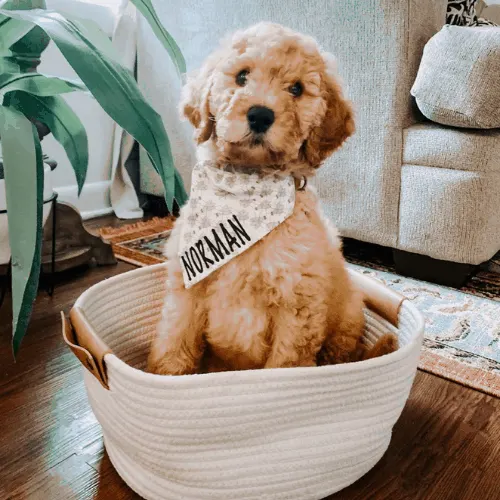
Photo courtesy of @shaina.shovlowsky on Instagram.
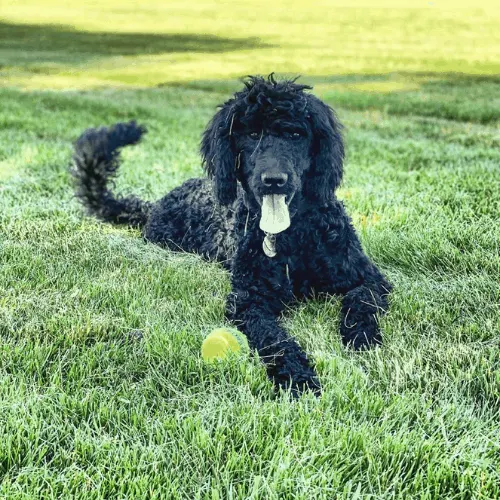
Photo courtesy of @mesa.goldendoodle on Instagram. 
Photo courtesy of @tatersgonnatate_dood on Instagram.
What is a Multigen Goldendoodle?
Multigenerational Goldendoodles, or Multigen Goldendoodles for short, are a common term used to refer to any Goldendoodle generation that is beyond an F2. This includes F2B, F2BB, F3, and beyond. If you ask a breeder who advertises Multigen puppies what generation they are, they should be happy to tell you the specific number.
Multigen Goldendoodle Price
Prices vary widely and depend on a number of factors including location, breeder reputation, size, and color. In general, Goldendoodles can range from $1,000 up to $5,000.
Multigen Goldendoodle Pictures

Photo courtesy of @abbybeardoodle on Instagram. 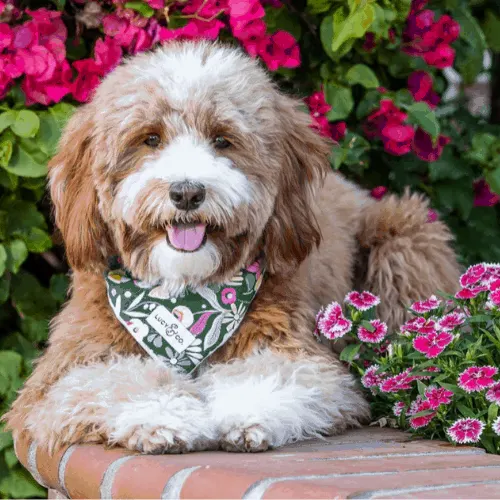
Photo courtesy of @halo.thedoodle on Instagram.
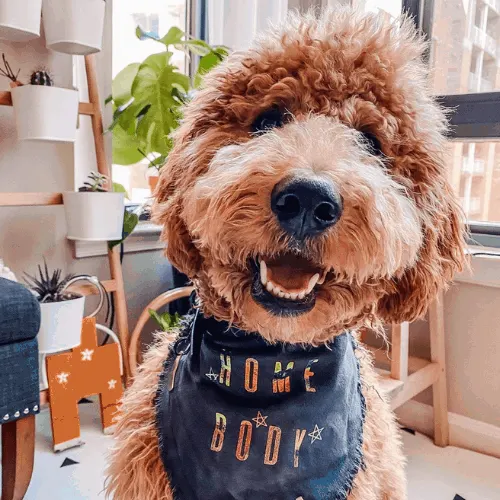
Photo courtesy of @goldendooodscout on Instagram. 
Photo courtesy of @thatdoodlekobi on Instagram.
F1 vs F1B Goldendoodle: Which of These Goldendoodle Generations Are Better?
This largely depends on what you’re looking for in your Goldendoodle puppy. If you’re looking for the classic Goldendoodle “teddy bear” appearance with a more straight, Retriever-like coat, an F1 may be for you. It’ll also have the most genetic diversity which could lead to a slightly lower chance of health issues down the road.
If you’re more concerned with allergies, an F1B Goldendoodle is definitely a safer bet. The puppies will be more predictable, with traits that are closer to the Poodle’s non-shedding and hypoallergenic characteristics.
If you have severe allergies, consider looking into the F1BB or F2BB generations as they are even closer to the Poodle in DNA.
F1 vs F2 Goldendoodle: Which of These Goldendoodle Generations Are Better?
In general, an F1 is a better choice than an F2. This is because first generation Goldendoodles are easier to breed and have more predictable traits than second generation Goldendoodles.
The one exception to this is if you are looking for your Goldendoodle to be more similar to a Golden Retriever than a Poodle. If you don’t care about allergies at all and adore the personality traits of the Golden Retriever, an F2 might not be such a bad choice.
F1B vs F2B Goldendoodle: Which of These Goldendoodle Generations Are Better?
This is a tough one, as these generations of Goldendoodles are similar in nature. They’re both backcrosses with the Poodle and both good for mild allergy sufferers.
More important than the specific generation in this case is the reputation of the breeder. Both of these generations, particularly the F2B, require a responsible breeder who does genetic testing to make sure the desired traits are produced with the least risk of genetic issues.
Compare prices, reviews, and other factors in addition to just the generation. All else being equal, our preference would be to lean slightly towards the F1B and it’s greater hybrid vigor and genetic diversity.
What Generation Goldendoodle is Best?
The most important factor to consider is if you have allergies. If you do, my first recommendation would be an F1BB Goldendoodle followed by the F2BB, F1B, and F2B generations in that order.
Read More: Are Goldendoodles Hypoallergenic? (We Asked 76 Allergy Sufferers!)
If allergies and shedding aren’t concerns to you, it’s hard to go wrong with a first generation Goldendoodle. They give you the “classic” Goldendoodle look, the greatest genetic diversity, and often the lowest price.
Remember, finding a responsible doodle breeder is a more pressing concern than which generation you choose. Goldendoodle generations are only as good as the breeder and the extent of the genetic testing they conduct.
Combine genetic testing with choosing a great pet insurance policy and you’re setting your Goldendoodle up for the best chance at a long, healthy life!
Not Sure Which Generation Your Goldendoodle Is?
Have you lost touch with your breeder? Or, maybe you’re the proud owner of a rescue dog? Is it still possible to know which generation of Aussiedoodle your dog is?
Luckily, the answer is yes! Many doodle owners have found success using Embark’s mail-in dog DNA testing kits. A simple swab of your dog’s cheek takes only a few minutes and can tell you their ancestry, potentially locate canine relatives, and reveal health issues they may be at risk for!




